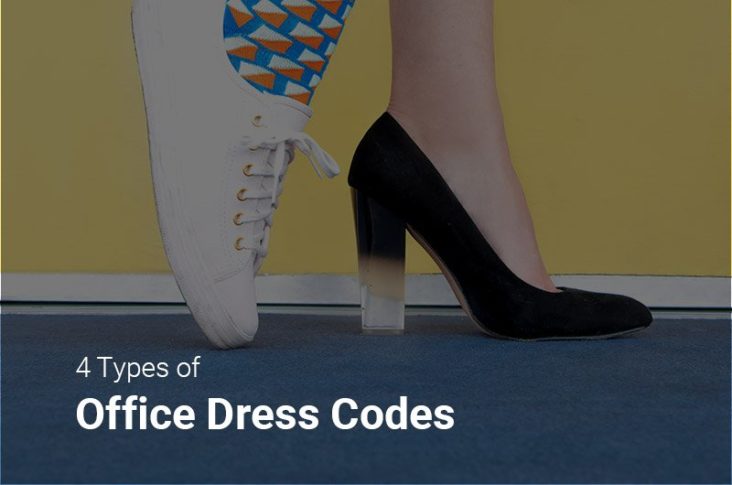After months in total confinement, certain sectors of the economy are being reactivated that require the return of their workers to their workplaces. So many will have to leave behind the flexibility in dressing that was conferred by the zoomed-in meetings and adopt the office dress codes.
If you are about to start your journey into a new job, it is important that you are very careful about the lines established with respect to clothing. The best thing in this case to avoid mistakes that can end up generating some uncomfortable situation is to check with the human resources office the code to follow. Your colleagues are also part of the guide.
The work environment dictates the rules. For example, if you have stayed within a business company as a sales executive, you will not pretend to go to the office wearing a pair of shorts and flip-flops, because this will be a debut with automatic dismissal.
A similar case is that of a person working in an extremely relaxed environment as a creative, for example, expecting to go unnoticed by showing up in a suit and tie.
It is necessary to be congruent and consistent in relation to the rules on good dress within your work environment, a good guide to take into account is the objective to which the company is directed.
Always keep in mind that your clothing is your letter of introduction, through it you transmit to others your professionalism. In total there are four codes that dictate the guideline in terms of clothing in relation to the workspace. In this article, we will talk a little bit about each of them.
Whatever your work environment is, the important thing is to follow the basic rules associated with their dress codes, because this will talk about your ability to assume the rules, and your professionalism.
What is a dress code and why should I follow it?
A dress code is a kind of guide that indicates the level of formality in the clothing you wear to work.
Although in many places there are no instructions on what to wear or what items to use, there are certain terms that give a clear idea of the formality attached to them:
- Formal businessman style
- Business style
- Business-casual style
- And casual style
The fact of knowing the basis of each one of these categories will allow the worker to dress in a correct way; because even if you don’t believe it, while in the labor field, your abilities have not been tested, it will be your presence that will speak for you.
It is a fact that we all want to project an excellent image, this is of utmost importance in our work environment. Therefore, take note of each of the codes that will we present below so that you do not fail in the attempt.
Formal business style
We are in front of the area that demands more formality when it comes to dressing. Within the formal dress code, you will find the most classic office look. The attire to wear is quite formal without room for any kind of flexibility. This type of look is used by professionals of very high executive level, directors, and top corporate managers.
What kind of outfits can you see? In the case of men’s suits, generally dark colors, white shirt with buttoned collar, solid-colored ties, black or brown shoes.
Women can be seen with suits of jacket and skirt, also valid are the suits of pants and jacket in sober colors and some dress of long cut up to the knee without a neckline. Footwear will always be classic and socks cannot be missed.
Business style
This is usually one of the most recognized and most widely used office locker rooms in companies. Although it implies formality, it is less rigid than that of the formal business, because it is linked to elegance and simplicity. The use of jackets combined with ties, collared shirts, blazers, is allowed. The footwear must be consistent with the style.
Women can opt for a skirt and trouser sets combined with jackets and blazers. The average heeled footwear should be closed and the accessories should be tailored to the occasion. Nothing exaggerated
Business-Casual Style
This code evokes the traditional office style. Although there are formal elements, there is room for comfort, although not in a broad way because an image that inspires security and confidence must be preserved. Even if men choose to wear a suit, it is not a requirement to wear ties. Dry cleaning dress pants with a more flexible margin in terms of tones are also allowed and can be combined with sports jackets.
In the case of women are ideal both suits and skirts cut straight to the knee, tops, jackets and sweaters, sober style blouses, without wide necklines. The shoes, although they can be of low cut, must be closed in the color of your preference. Other options that can be taken into consideration are classic garments such as white shirts, blazers, dress pants, and moccasins.
Casual style
This is the most flexible of all, in general, it is characterized by being less restrictive than the previous ones, because in many cases it does not imply a direct relationship between the worker and the client, and this does not mean that the workers can go as if it was an outing to a club.
How to maintain a professional aspect with a casual dress? In the case of men, sweaters, dark-colored jeans, and sneakers can be worn. In the case of women, blouses, low-cut shoes, pants, and even knee-length casual dresses are allowed.
As you may have seen the offices’ dress codes are quite clear. It is important not to break their rules especially if you are part of a company where your personal image weighs heavily on your customer relations. In any case, the idea is to project that whole torrent of professionalism inside you. An image is worth a thousand words; always keep this in mind when dressing.



